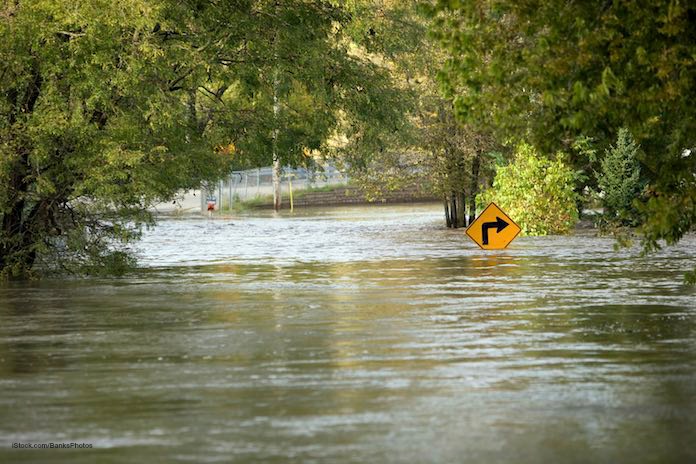There is severe flooding in Mississippi along the Mississippi River that has inundated the southern part of the states. And flood warnings and advisories have been issued from that state all the way up to Illinois. While the flood waters recede, officials are telling people about food safety. Do you know how to keep food safe in a flood?

Any extreme weather can cause serious damage to a home. The power may go out; a home can be flooded with very dirty, contaminated water; and structural damage can occur. The key to keeping food safe during these events is to plan ahead.
Before severe weather strikes, have a plan. Make sure you have thermometers in your refrigerator and freezer. The fridge should be below 40°F and the freezer below 0°F. The thermometers will help let you know if the food is safe if the power goes out.
Freeze containers or water for ice to keep food cold in these appliances. And if the water supply is contaminated, this ice can supply drinking water. It’s a good idea to freeze refrigerated items like meat, poultry, milk and leftovers to keep them at a safe temperature longer.
A full freezer, kept closed, can keep food safe for 48 hours when the power goes out. Fifty pounds of ry or block ice can keep an 18 cubic foot, fully stocked freezer cold for two more days. But a refrigerator can only keep food cold for 4 hours without power. Have coolers on hand, with ice, to keep refrigerated food cold if the power goes out for more than 4 hours.
After the flood or storm, check each food to see if it has stayed cold enough to be safe. Any food with ice crystals can be refrozen. Discard any perishable foods (seafood, poultry, milk, eggs, meat, and leftovers) that have been outside of refrigeration for more than 2 hours.
Flood water can be contaminated with everything from E. coli and Salmonella bacteria to hepatitis A and tetanus. Any food that has come into contact with flood water should be discarded unless it is packaged in undamaged, commercials prepared food in all-metal cans and retort pouches. Food containers that seem waterproof but aren’t include screw caps, snap lids, pull tops, and crimped caps. Discard cardboard juice and milk containers and home canned foods if they come into contact with flood water.
Discard food in damaged cans, any cans that are swollen, leaking, have punctures, holes, fractures, deep rusting, or crushing and denting that prevents the use of a manual can opened. Remove labels and sanitize the cans washing them in soap and water or by boiling in clean water for 2 minutes or by putting them in a bleach solution for 15 minutes.
Make sure that you clean your kitchen too. Countertops and utensils should be washed with soap and water, then sanitized by a bleach solution.




